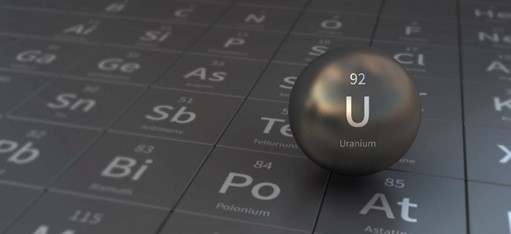Headlines in the United States will focus on the United Kingdom’s Prime Minister Boris Johnson stepping down from power. For investors, there was another headline that should garner more attention.
Yesterday, the European Parliament classified nuclear power and natural gas as “green energy”. The decision is part of an E.U. framework known as “E.U. taxonomy” which will formulate the bloc’s energy plans through 2050. The plan would classify nuclear and natural gas as “transition”. The law would make gas and nuclear energy projects “green” which allows them to access cheap loans and state subsidies.
Uranium stocks and ETFs have been under selling pressure since April with many down over 30% during this period. Investors want to see this downward pressure arrested. This pivot by Europe could help drive that turnaround.

Europe set out a roadmap to put it at the forefront of a global energy transition from fossil fuels to renewable energy. Unfortunately, the transition plan left it dependent on Russian natural gas.
Russia’s invasion of Ukraine turned the world’s energy markets upside down. The West placed heavy sanctions on Russia to deter its aggression. Rather than pull back, Vladimir Putin has turned up the heat and weaponized his country’s natural resources.
This has put pressure on the E.U. economy as energy costs have skyrocketed. This was most evident in the German trade balance released on Monday. Germany’s export-driven economy posted its first trade deficit in 30 years. Its exports were 11.7% higher than the prior year, which is good news for the global economy. However, imports were up 27.8% from the prior year driven by higher prices for imports of energy, food, and materials.
This is driving the E.U. to take extraordinary steps as it transitions its energy needs.
According to the World Nuclear Association, nuclear made up 25% of the European Union’s energy needs in 2019. Fossil fuels were 46% and renewables represented 29%. The EU has a target of renewables delivering 46-50% of energy needs by 2030.
We expect to see that target pushed out as nuclear will continue to be a vital energy source for the region. This means mining uranium will be a prosperous business in the coming years. Here are a couple of names to have on your radar.
Cameco Corp (CCJ)
- CCJ operates in two segments- Uranium and Fuel Services. It mines uranium for sale and engages in the refining and conversion of uranium.
- The company is working to restart its McArthur River mine which has been closed since 2018. This is the world’s largest high-grade uranium mine located in Canada’s Saskatchewan province.
- Shares of CCJ are down approximately 30% since peaking in April around the $32 area. The stock is finding support at the $20 psyche level.
- A break back above the 50-sma (23.17) would be encouraging. Risks are well-defined for investors as a break below $20 would signal the next leg down. Stops at the $19 area would be prudent.
Global Uranium ETF (URA)
- The ETF offers exposure to a broad range of companies involved in global uranium mining and the production of nuclear components viewed as pure plays.
- CCJ is the top weighting at 22%. Canada is the top region in the ETF as it makes up 43% of the ETF.
- The Expense ratio is high at 0.69% but it also offers a Distribution Yield of 7.66%.
- The ETF is on a downward trajectory as it is down over 30% since late April. It hit an 11-month low yesterday.
- Investors would like to see the stock settle and hold the $18-20 area before trying to catch a falling knife.
Energy Fuels (UUUU)
- A United States uranium mining company with properties based primarily in Utah.
- Its market cap is only $767 million compared to approximately $10 billion for CCJ. It has a 153 million float with a 16% short interest. This makes it a more volatile play.
- The stock rallied to $11 in mid-April but has been cut in half over the past two months as it slides to the $5 psyche level.
- The stock is showing signs of holding the $4.75-5 area. It sets up as a good trading vehicle, but we would prefer investors stay in a steadier name like CCJ or a broad-based ETF.
Sprott Uranium Miners (URNM)
- Toronto-based Sprott Asset management purchased this ETF from Exchange Traded Concepts back in 2021.
- The ETF offers access to a basket of global companies involved in the uranium process.
- One issue we would have with this ETF is its largest weighting is National Atomic Company Kazatomprom which operates in Kazakhstan. This is more susceptible to disruption with the Ukraine conflict. CCJ is the second heaviest weighting at 16%.
- The expense ratio is 0.85% which is higher than URA.
- Long story short, we would prefer to be involved with URA as it has less political risk and is cheaper to own.
